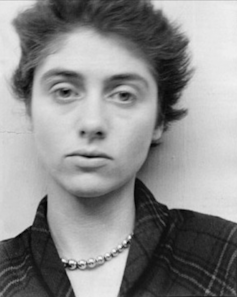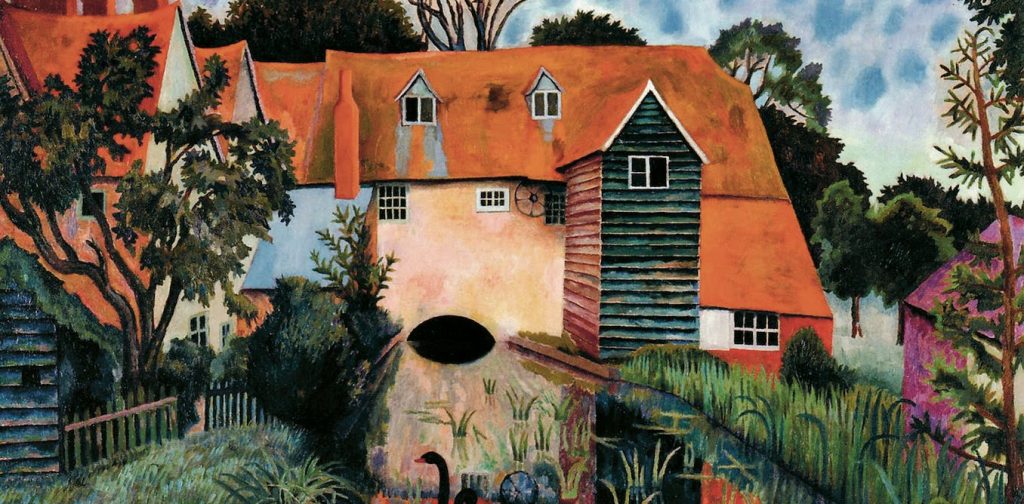The category of “art book” is vast, like art itself, but the best ones mix beautiful, interesting images with engaging and intelligent text. The books on this short list range from groundbreaking scholarly texts to dreamy, personal reflections, but all find that balance between image and narrative that makes an art book special. Each pushes the boundaries of scholarship, book design and ways of thinking about art and history in exhilarating ways.
1. Diane Arbus Documents
This book about the seminal and controversial 20th-century photographer Diane Arbus is remarkable and perhaps unique. It was published to accompany the rehang of the record-breaking 1972 MoMA Diane Arbus exhibition at David Zwirner and Fraenkel Galleries in New York, as they jointly took up representation of the artist’s estate.

Allan Arbus / The estate of Diane Arbus
But it is not a catalogue of the exhibition, and features hardly any of Arbus’s photographs. Instead, it is a collection of written essays, reviews, scholarly articles and a few letters by and about Arbus. The written works have been reproduced as they were originally published, which makes the book feel like a scrapbook.
Reviews of the original exhibition must be read on yellowed newsprint, surrounded by 1970s advertisements. The text itself becomes an object, almost a work of art. Here, Arbus’s photographs are reproductions of reproductions in articles. It’s an amazing visual feast that makes the case for the aesthetic value of ephemera.
David Zwirner Books, Author provided (no reuse)
Photography has always grappled with the meaning of reproductions and the importance of the authenticity of a work of art that can be printed over and over. Rather than resolving this debate, this book embraces the ambiguity. Rarely is the whole conversation about an artist gathered together in this way, allowing the reader to draw their own conclusions.
Very little interpretative text has been added, although the passages that are there to explain each section of collected texts do a succinct job of keeping the reader oriented on the journey through Arbus’s legacy from the 1970s to the present day.
2. Letters to Gwen John
Contemporary British painter Celia Paul’s exquisite encounter with the early 20th-century modernist English painter Gwen John evokes an imagined figure of the artist rather than a biographical one. In so doing, it also brings Paul herself into greater clarity as an artist and person.
Over the course of 18 months, Paul writes letters addressed to Gwen John, whom she has never met. Indeed, they were never even alive at the same time – Paul was born in 1959, 20 years after John’s death. Paul muses that she has always felt a connection to John, not just because of the similarities in the way they paint.
Penguin, Author provided (no reuse)
As the relationship between the two women builds through Paul’s one-way correspondence, the connections between them do seem to be uncanny. Both women had romantic relationships with famous older male artists (Paul with Lucian Freud, John with Auguste Rodin); both aggressively defended their solitary, ascetic homes; both made small and unfashionable work that eventually found acclaim; and both had close but conflicted relationships with their mothers and siblings.
Through Paul’s eyes, John comes to life in a way she never could to a historian. The way that she is able to critique and evoke the drama of being in a relationship with an older, powerful male artist, for example, is nuanced and vulnerable rather than objective. This strange and magical exercise in imagination and friendship across time and space is an utterly revelatory piece of art writing.
Penguin / Letters to Gwen John, Author provided (no reuse)
3. The Real and the Romantic: English Art Between the Two World Wars
Frances Spalding’s latest book continues her move towards a focus on networks and groups of artists, after several decades of writing notable biographies, such as her acclaimed 2016 work Vanessa Bell: Portrait of the Bloomsbury Artist.
Here she writes about the years between the two world wars, which have traditionally been overlooked in the history of English and British art, arguing that the dichotomy between the “real” and the “romantic” is not as clear-cut as it has been made out to be. Both qualities are generally excluded from narratives of modernism in favour of a focus on abstraction and conceptual innovation.
Spalding disrupts this traditional categorisation in a moment of reckoning with the boundaries of “English art” and “British art” – her book is distinctly concerned with English art, not with a far-reaching British art that is now understood in terms of Empire.
Thames & Hudson, Author provided (no reuse)
In this beautifully illustrated volume, she engages with a vast cast of artists, many of whom are rarely discussed, such as Anna Airy, or whose later careers are often forgotten, like Walter Sickert. She examines the retreat from modernism after world war one, the legacies of trauma, industrialised warfare and the changing gender roles caused by war.
Her analysis is not limited to individual artists, but also includes arts institutions: museums, government-run funding programmes (or lack of), and exhibiting bodies large and small. The book deftly weaves together visual analysis and social history to give the reader a thorough picture of the development of English art in this pivotal historical moment.
Elwin Hawthorne / Thames & Hudson, Author provided (no reuse)
A Revolution on Canvas: The Rise of Women Artists in Britain and France, 1760-1830
With this groundbreaking work, Paris A Spies-Gans confronts head-on the challenging questions about how to write a history of women artists. She uses a data-driven approach to counter assumptions made through the field of art history that women did not enter the artistic profession in significant numbers until the late 19th century.
Focusing on exhibition records from the Royal Academy in London, and the French Salon des Beaux-Arts, she demonstrates that more women were represented in these key venues in the 18th century than are represented in museum collections in the same cities today (7-12% then to about 5% now).
Paul Mellon Centre / Yale University Press, Author provided (no reuse)
She avoids overly quantitative pitfalls by weaving individual stories and archival documents through her narrative, and by continuing to return to the big question: why has the success and prominence of women artists in this period been so completely forgotten? When we ask “why have there been no great women artists?” as Linda Nochlin famously did, how are we defining “great”?
The book is not only engrossing and stuffed with ravishing images, but also offers a truly pioneering rebuttal to “revisionist” art history by claiming that, in this case, no revision is needed: women artists were already great.

